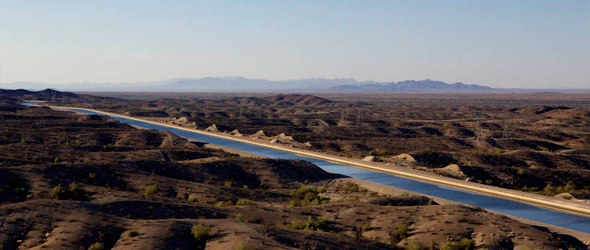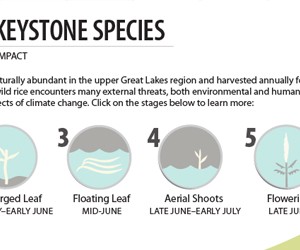China to Cap Energy Use by 2015 in National Low-Carbon Plan
The energy target will be the highlight of a document to come later this year, as well as a cornerstone of China’s efforts to curb soaring greenhouse gas emissions, which currently stand at a quarter of the global total. Cutting coal consumption will inevitably also cut water use, as coal is China’s largest industrial user of water.
Following months of fierce debate, Chinese government officials have reportedly settled on a total energy cap of 4.1 billion metric tons (4.5 billion tons) of coal equivalent by 2015, or more than 25 percent higher than the 3.15 billion metric tons (3.5 billion tons) of coal that were consumed last year. The energy cap is expected to be included in a comprehensive low-carbon plan that will be issued later this year, according to Reuters.
In 2010, the coal sector in China used 138 billion cubic meters (36.5 trillion gallons) of water, or 23 percent of the 599 billion cubic meters (158 trillion gallons) that were used nationally. National water use is expected to increase to 620 billion cubic meters (163 trillion gallons) annually by 2015 and to 670 billion cubic meters (177 trillion gallons) by 2020 — with the coal sector’s share increasing to 28 percent, or 188 billion cubic meters (49.7 trillion gallons).
If formally approved, the proposed restraints on coal, which supplies 70 percent of the nation’s energy and is the largest industrial consumer of fresh water, will serve to keep water use from climbing even higher.
Last month, the energy cap plan was approved “in principle” by a panel set up by China’s cabinet and chaired by Premier Wen Jiabao. It will be formally passed later this year, pending recommendations from other government departments. Analysts have said, however, that the plan has yet to be signed off and that a cap could still be delayed by disagreements.
Though the cap is not as tough as expected, energy experts told Reuters that setting an energy limit would add certainty to China’s attempts to contain emissions and should pave the way for emissions-trading schemes in the country.
The limit on energy use will be crucial for China’s efforts to meet energy and carbon intensity targets over the next five years. In March 2010, in pursuit of more sustainable economic growth, the government unveiled its master economic blueprint through 2015, with plans to cut energy consumption per unit of GDP by 16 percent, reduce carbon dioxide emissions by 17 percent, and decrease the water consumption per unit of value-added industrial output by 30 percent.
These goals will help China meet its 2020 carbon intensity target — proposed for the 2009 United Nations Framework Convention on Climate Change (UNFCC) and Kyoto Protocol in Copenhagen, Denmark — of cutting CO2 emissions per unit of GDP by 40 to 45 percent, when compared to 2005 levels.
According to Reuters, the key issue for the next five years will be how the aggregate national targets are allocated to the provinces.
China struggled to meet its energy intensity reduction target of 20 percent during the 11th Five-Year Plan period (2006-2010), barely eking out 19.06 percent after closing many of its cement factories, paper mills, small power plants, and steelmakers, in addition to building more advanced power plants and big industrial bases closer to the coal reserves in the north and northwest regions of the country. Moreover, last year, several provinces across China cut power to industries, residential buildings, traffic lights, and even hospitals to meet their energy-saving targets.
Last week, the National Development and Reform Commission — China’s top economic planning agency — for the first time published the names of regions that were struggling to meet targets, including the provinces of Ningxia, Qinghai, and Xinjiang in the northwest, as well as Jiangsu on the eastern coast.
To learn more about energy’s impact on China’s water resources, follow Circle of Blue’s Choke Point: China series.
Source: The Guardian, Reuters
, a Bulgaria native, is a Chicago-based reporter for Circle of Blue. She co-writes The Stream, a daily digest of international water news trends.
Interests: Europe, China, Environmental Policy, International Security.








Leave a Reply
Want to join the discussion?Feel free to contribute!